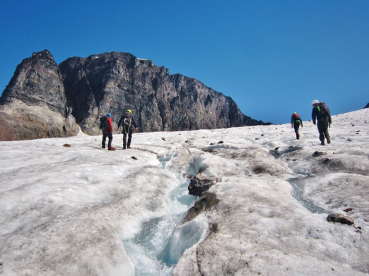I was recently part of the EU funded HiTech AlkCarb consortium. During this project I studied the roof zones of alkaline magmatic complexes in the Gardar Province (South Greenland).
The Gardar is an ancient rift zone that was volcanically and tectonically active between 1300 and 1100 million years ago. Although the province is no longer active, it is of major interest to geologists because the subsequent uplift and glacial erosion have cut deep into the rift and exposed the rocks and magma chambers that once lay well below the surface.

Magma that stalled at upper crustal levels in the Gardar rift evolved to very extreme compositions. This generated high concentrations of incompatible elements, including uranium, thorium, niobium and tantalum, in the tops of these magma chambers. As a result the Gardar Province hosts some of the world’s best mineralised magma bodies.

